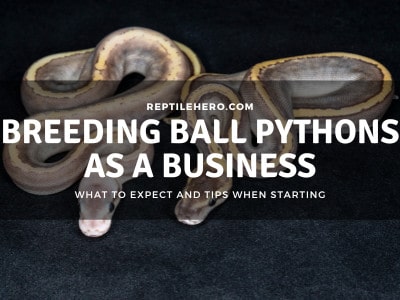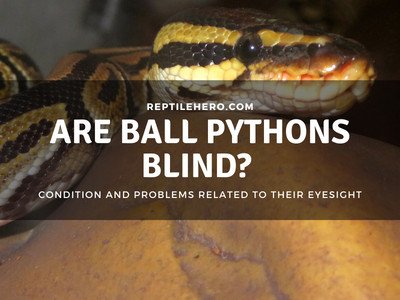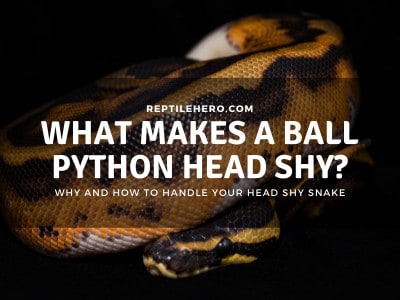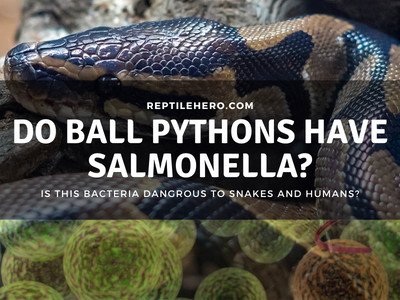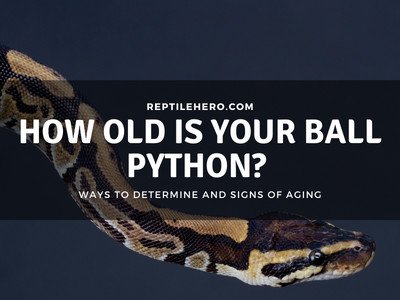Can Ball Pythons Eat Goldfish? (Be Careful)
The third most popular pet is fish, which on top, are goldfish. Feeding a ball python goldfish may have already popped up in your mind since they are dirt-cheap in most pet stores. Can this popular fish be fed to your ball python?
Goldfish cannot be fed to a ball python. They contain Thiaminase which is a harmful enzyme that can cause Vitamin B1 deficiency. Ball pythons are also non-pescatarians, so an introduction of fish to their diet is not recommended. Ball pythons can live on a staple diet of rodents and birds.
Although there are many options for ball python food, can fish be one of them? Are you willing to try without knowing the risk? Learn more about this below!
Can Ball Pythons Eat Fish?
Ball pythons can feed on certain types of fish though some of them can be extremely harmful[1]. This is because of some natural chemicals the fish can contain as feeders.
Fish as an alternative diet for ball pythons is a lesser-known concern of some keepers. Although there are some who share their experience regarding this situation.
A keeper friend of mine told me he had left 2 goldfish in a ball python’s water dish and found them missing the next morning. Another tried feeding a slice of tilapia to a yearling ball python and ended up accepting it.
Fun fact! Most snakes including ball python also hunt through the use of their “pit glands” which senses the body temperature coming from their prey.
This means that ball pythons, being picky eaters, may not be interested in fish which are mostly cold-blooded animals. This is due to their preference for warm-blooded animals like rodents and birds.
Effects of Feeding Fish to Ball Python
Fish that contain Thiaminase are harmful to ball pythons. Fishes that do not contain this enzyme, will just cause some minor issues like smelly fecal matter and fast digestion.
Trimethylamine oxide is the enzyme in fish that causes a bad odor when broken down, that is why snakes that generally eat fish have a certain musky smell. But for ball pythons, their poop can have a different odor.
Fish can also be digested faster due to their muscle composition and low-fat content compared to more traditional feeders like rats and mice. Fish also have lesser connective tissue compared to other types of meat.
A study shows that the digestion rate of watersnakes for fish can be as fast as 16-21 hours [2]. Since watersnakes have a faster metabolism than ball pythons, it is safe to assume that a ball python can digest it in about 3 days per 100 grams of fish[3]. This is faster compared to their normal digestion rates for rodents and birds (7-10 days)

Nutritional Value of Fish as Feeders
Fish have less nutritional value compared to other staple ball python feeders. Compared to rodents, the amount of nutrients fish provide is insufficient to ball pythons.
Here is a comparison between common feeder fish species and rodents.
| Feeder | Protein | Fat | Kcal/g |
|---|---|---|---|
| Guppies | 46% | 16% | 13.10 ME |
| Wild Salmon | 25% | 8% | 7.71 |
| Trout | 22% | 6.7% | 7.71 |
| Rat | 61.8% | 32.6% | 6.37 |
| Mice | 55.8% | 23.6% | 5.25 |
The main difference here is the actual content. The essential nutrients in fish are the same found in rodents but in quite a different amount, making it less suitable for a ball python diet.
Personally, I have not heard from any co-keeper that fish are better than rodents in terms of being a ball python feeder. I only found small threads in some forums about people giving fish to their ball pythons, which do not have evidence.
What to do When Feeding Feeding Fish to a Ball Python
It is not advisable to feed fish to a ball python. However, some types of fish can be fed while keeping in mind these 3 factors: 1)Species, 2) Frequency and 3) Method.
Species
In general, fish that contain Thiaminase is harmful to any animal that does not synthesize Vitamin B1. Even if these fish are frozen, they can still be fatal if given frequently.
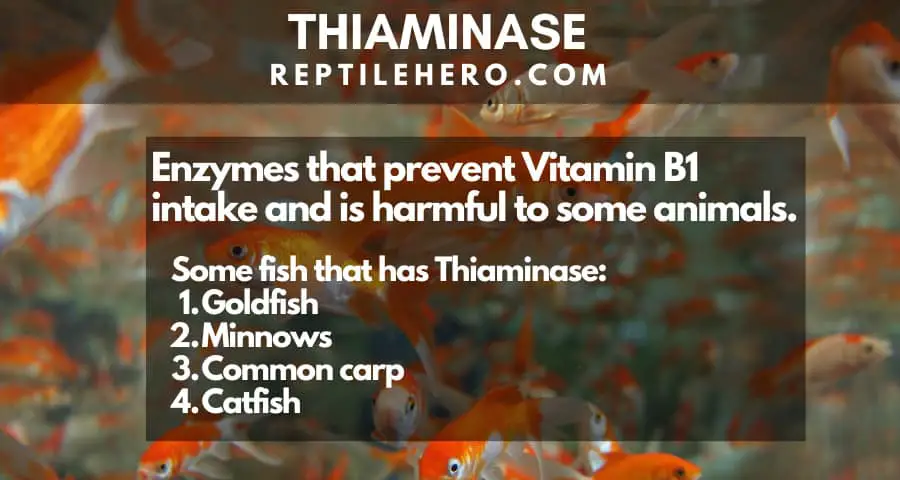
Thiaminase is a mineral that prevents the intake of Thiamin (Vitamin B1) from a food source. Vitamin B1 is responsible for a healthy metabolism and nerve tissue.
An insufficient amount of Vitamin B1 can result in Thiamine deficiency[4] which causes nerve damage and digestion issues. If not treated properly, this illness can cause heart failure and neural damage to some reptiles.[5]
These are the fish that should be avoided to feed a ball python due to their Thiaminase content:[6]
- Goldfish
- Common carp
- Minnows
- Lake and round whitefish
- Catfish
- Bowfin
- Whitebait
- Yellowfin Tuna
- Common Brim
- Mackerel
These are common examples of fish that are safe for ball python consumption as they do not contain Thiaminase:
- Guppies
- Platies
- Mollies
- Mosquito fish
- Trout
- Salmon
- Bass
- Perch
- Smelt
- Common eel
Frequency
Even though it is not recommended, it is still possible to be part of the diet of a ball python in very minimal amounts: a maximum of 50 grams of either live or frozen-thawed once a month.
With this quantity, ball pythons have a higher chance of not liking fish. Because when your pet ball python makes fish its main diet, you would have problems since they are not pescatarians.
Though this is highly unlikely, another reason to recommend this portion is that they do not need fish. Ball pythons do not need variety in their food and can live on a staple diet of either mice or rats.
Method
In feeding fish, there are 2 methods to keep in mind, live and frozen-thawed feeding.
- Live Feeding is essentially giving certain pets live food. In feeder fishes, this method is commonly used in feeding predatory fishes and pescatarians. Since fish are cold-blooded, non-fish-eating snakes like ball pythons will have a hard time accepting this type of feeding method.
- Frozen-thawed is where you thaw or heat a frozen feeder for the consumption of an animal. This method will help non-pescatarian snakes like ball pythons because this gives a frozen fish body heat unlike a live one, which can stimulate a feeding response from your ball python.
You can give a whole fish or a slice of fish like salmon and trout. Just make sure that there are no seasonings and processed minerals that may be harmful to your ball python’s health.
Can You Feed Only Fish To Ball Pythons?
Ball pythons should never be fed exclusively with fish as this will harm their health and prevent them from receiving the right nutritional content required for their development.
The concern here is whether your ball python will accept fish, as discussed above. If this rare circumstance happens and your ball python made fish its staple diet then there will be problems. The proper nutrition requirement in keeping a ball python healthy is harder to achieve when you use fish as its food source.
Further Questions
Can a ball python digest fish bones?
Yes, like a rodent or bird bone fish bones can be digested by ball pythons. The process of a python’s digestion starts with the disintegration of muscles then lastly, bone. However, keratin commonly found in hair and feathers cannot be digested.
What are other snakes that feed on fish?
Garter and Ribbon snakes are common examples that are kept by keepers in the hobby. Watersnakes and sea snakes are also pescatarian snakes but are mostly venomous and rarely kept in the hobby. Some of these snakes can also feed on amphibians, eggs, and even snails.
Summary of Can a Ball Python Eat Goldfish?
Ball pythons in the wild are found in the Sahara and habitats that rarely have fish. They live on a staple diet of rodents and birds. In regards to feeding fish, it is not recommended and there are some species that are harmful to a ball python.
These species are the ones that contain Thiaminase which is an enzyme that prevents the intake of Vitamin B1 which is essential for a ball python. Goldfish also contain Thiaminase and are not advisable as feeders.
References
[1] https://www.tandfonline.com/doi/pdf/10.1080/11250009809386744?needAccess=true
[2] https://www.niu.edu/clas/biology/_pdfs/rking/Jones_et_al_2009.pdf
[3] https://sci-hub.se/https://pubmed.ncbi.nlm.nih.gov/22162867/
[5] https://sci-hub.se/https://doi.org/10.1016/S1055-937X(96)80005-3
[6] https://spo.nmfs.noaa.gov/sites/default/files/legacy-pdfs/SSRF631.pdf

